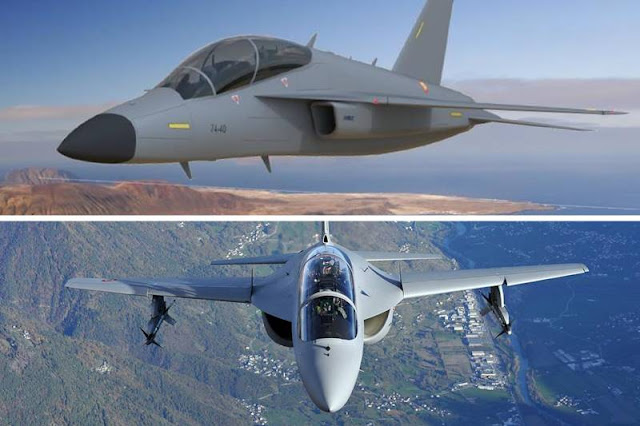Leonardo, Airbus vie for Spain's advanced training aircraft deal
 |
| The AFJT and M346 jets compete in the Spanish tender to select a new advanced training aircraft for the Spanish Air Force. |
On the occasion of the conference "The training of pilots in the Spanish Air Force", organized by Grupo Edefa and broadcast live on January 20, representatives of the Spanish Air Force and the Directorate-General for Armament and Material (DGAM) of the Defense shared the key requirements for future pilot training systems for the Ejercito del Aire (Spanish Air Force).
They are considering introducing 55 new advanced trainer jets, which will be purchased in two steps (30 + 25), along with state-of-the-art integrated systems that may also include AI technology. The new aircraft is intended to replace the old Northrop F-5M Freedom Fighter in the advanced phase of the fighter pilot training process.
This program will give a strong shock to the trainer market in Europe as the number of systems required is quite high and will generate a very greedy business. The main contenders in the Spanish tender are Airbus and Leonardo who introduced their best technologies and programs during the event.
Airbus' proposal envisages the development of an advanced training aircraft, the AFJT, for which two European-made engines with afterburners are being studied. The Spanish giant aims to develop a new integrated system together with national industrial partners to give a boost to the Spanish economy. "It is a train that passes now and must be taken," said Abel Nin, AFJT program manager.
Airbus plans to integrate into its aircraft an engine between the Safran M88 and Eurojet EJ200 capable of offering a thrust of 60 kN dry and 90 kN with afterburner for a maximum speed of Mach 0.95. The AFJT will have a weight of 7 tons, nine pylons for attacking weapons or other equipment, HOTAS (Hands On Throttle And Stick) controls and an aerodynamic surface optimized for aggressive attack maneuvers. It will boast cutting-edge avionics, with a cockpit that includes a large touch screen, a HUD (Head Up Diplay) and a future helmet with integrated data presentation. The aircraft will be integrated with a GBTS (Ground Based Training System) capable of guaranteeing combined training between the student on the ground and the one in flight.
On the other hand, Leonardo's proposal, introduced by Manuel Martinez Cuadron, commercial manager of Leonardo Hispania, is based on the proven integrated M-346 solution which offers low technological risk and immediate availability as it is already in service with the Air Forces of Italy, Republic of Singapore, Israel and Poland.
The M-346 is a twin-engine jet featuring a four channel Fly-By-Wire Flight Control System, redundant main systems, state-of-the-art avionics with latest human-machine interface with Multi-Function Displays (MFD), Head-Up Displays (HUD), Hands On Throttle And Stick (HOTAS) controls, in-flight safety features like PARS (Pilot Activated Attitude Recovery System). Thanks to its Embedded Tactical Training System (ETTS), the M-346 is able to emulate on-board sensors, weapons, Computer Generated Forces (CGF) as well as allowing pilots to interact in real time with a virtual tactical scenario in a LVC (Live, Virtual and Constructive) environment. In addition, its large flight envelope, high thrust-to-weight ratio and high maneuverability, allow the aircraft to offer maneuverability similar to that of next-generation combat aircraft.
Cuadron also undelined that their solution could also benefit the Spanish industry as it involves the participation of a large network of local partners and suppliers such as those already owned by Leonardo Hispania.
Written by Matteo Sanzani





No comments
All comments related to the contents of our articles are welcome. It is not allowed to post promotional messages, links to external sites, or references to activities not related to this blog.